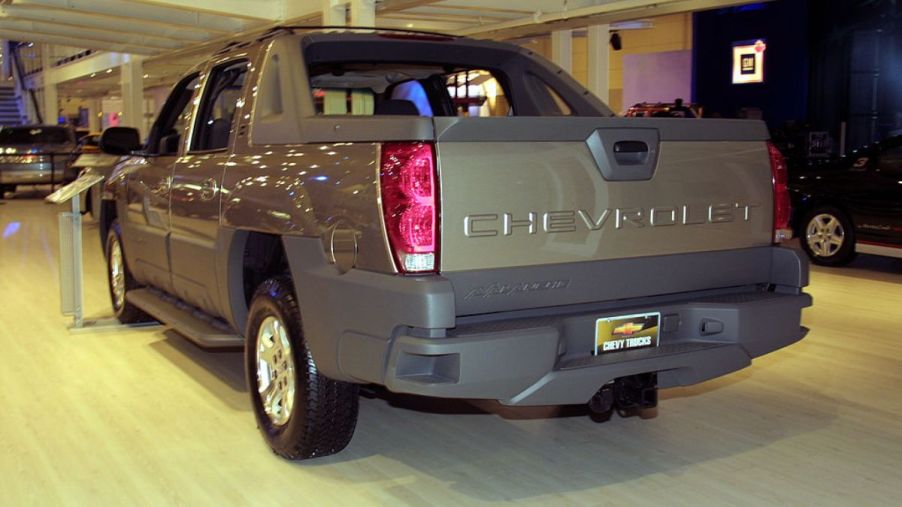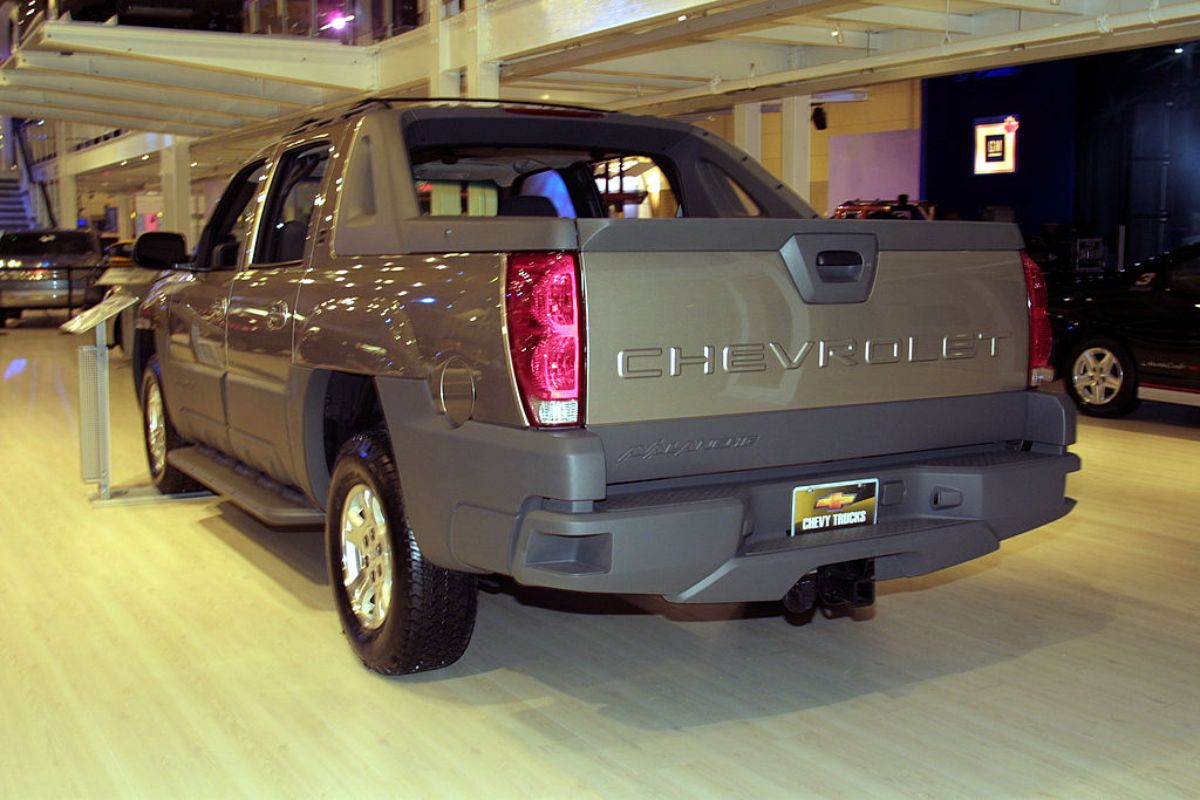
2 Reasons Why the Chevy Avalanche Truck Bed Looked Like That
The Chevy Avalanche was one of GMs uniquely designed pickup trucks that many people wanted to snag, including some furry owners. It was created as a compromise for consumers who weren’t sure if they wanted an SUV or a truck. This design appealed to both types mainly because of its pickup bed.
Chevy’s Avalanche is remembered for the oddly shaped railings, short cargo bed, and plastic cladding along the sides of the vehicle. But there was more to this truck/SUV combo. Let’s take a brief look at its history and the two main reasons for its popularity.

A brief history of the Chevy Avalanche
The first Avalanche showed up on the market in 2001 for the 2002 model year. Built off the same GMT800 platform seen with the Silverado, Tahoe, and Suburban, this half SUV and half truck drew lots of attention from buyers who couldn’t quite decide what type of vehicle they wanted, according to Driving Line.
Chevy offered it in either half or three-quarter-ton classification, and it came with four full-sized doors, plastic body panels, and a short pickup bed. A 5.3-liter V8 initially powered it for the 1500 models and an 8.1-liter V8 for the 2500 version.
In 2007, the Avalanche received a redesign, completely removing the plastic materials that drew much criticism. While the pickup/SUV combo remained one of the most popular vehicles in the Chevy lineup, production ended after the 2013 model year.
It was discontinued because the Silverado pickup saw quite a bit more sales than the Avalanche. To maximize profits, GM decided to pull the plug on the unique SUV/truck design and put all its efforts into Chevy’s full-size truck.
Why was it so popular? The fact that it was uniquely designed is one reason, but a couple of unique features drew many people to it. Here are the two attributes that made it so appealing.
1. Chevy featured a midgate for the Avalanche
Chevy’s Avalanche had a short pickup bed, which wasn’t helpful in hauling items. However, the pickup had a midgate design that enabled it to extend the truck’s bed to a more full-sized one. To lengthen it, all you had to do was fold down the rear seat of the vehicle and tuck away the back window.
The same midgate design was featured on other GMC vehicles, including the Cadillac Escalade EXT, Envoy XUV, and the Hummer H2 SUT, according to GM Authority.
While the Avalanche is gone, the midgate design has popped up once again in Chevy’s lineup. The 2024 Silverado EV has some of the same unique features but won’t come with the same name, according to MotorTrend.
2. Sail panels reinforced the vehicle’s platform
The angular pillars that extend off the sides of the bed panels to the top of the cab were interesting styling features. However, they weren’t meant just for looks. The pillars actually had a purpose to them.
Built with the same chassis as the Suburban, eliminating the top of the back end to create a pickup bed compromised the structure. By adding the pillars, GM was strengthening the body. The design was also for adding some aerodynamics to the vehicle.
Chevy’s upcoming Silverado EV not only has the same midgate design but also comes with the same sail pillars as reinforcement to the pickup’s bed. However, it isn’t styled the same way as the Avalanche. It comes with its own design.
Chevy’s Avalanche was a functional pickup/SUV built with the same structure as the Suburban. Buyers were drawn to its midgate and sail panel designs and the exterior styling. However, the model just couldn’t compete with the brand’s full-size pickup, the Silverado, so it was discontinued in 2013, with no plans to return.
RELATED: The Chevy Avalanche Was a Victim of Its Own Success


